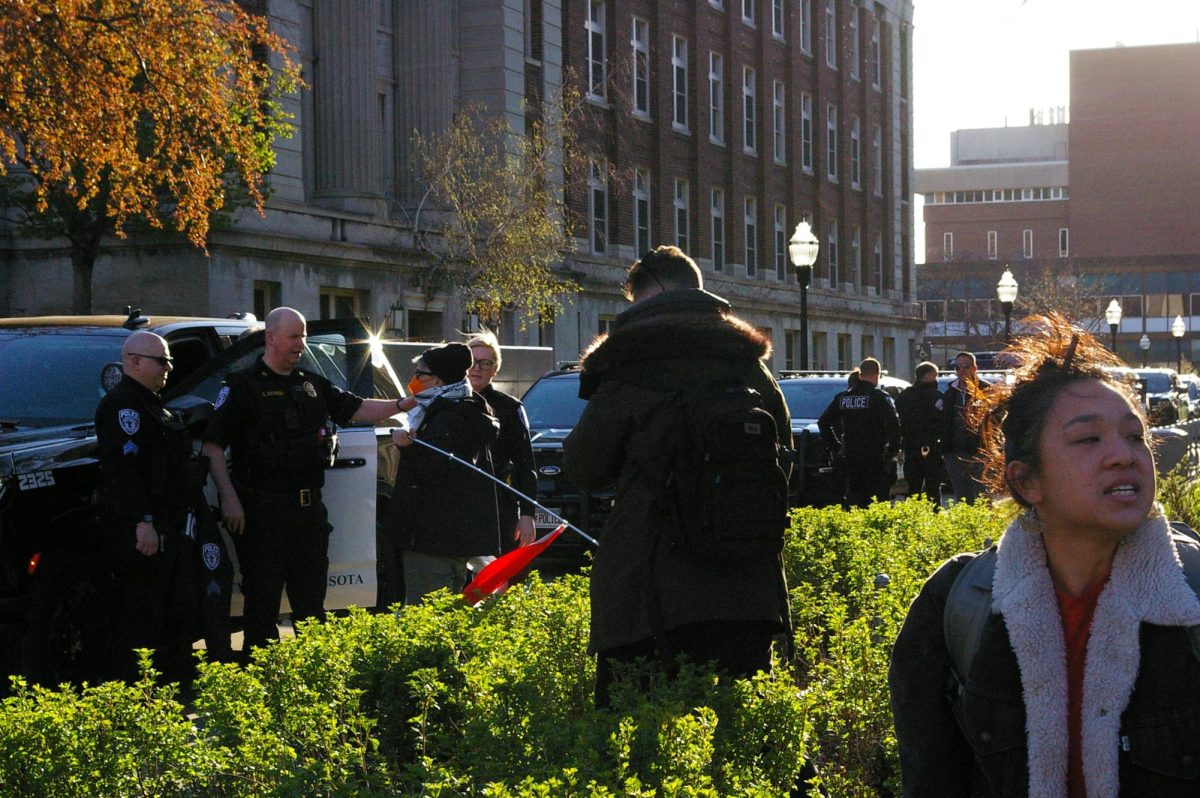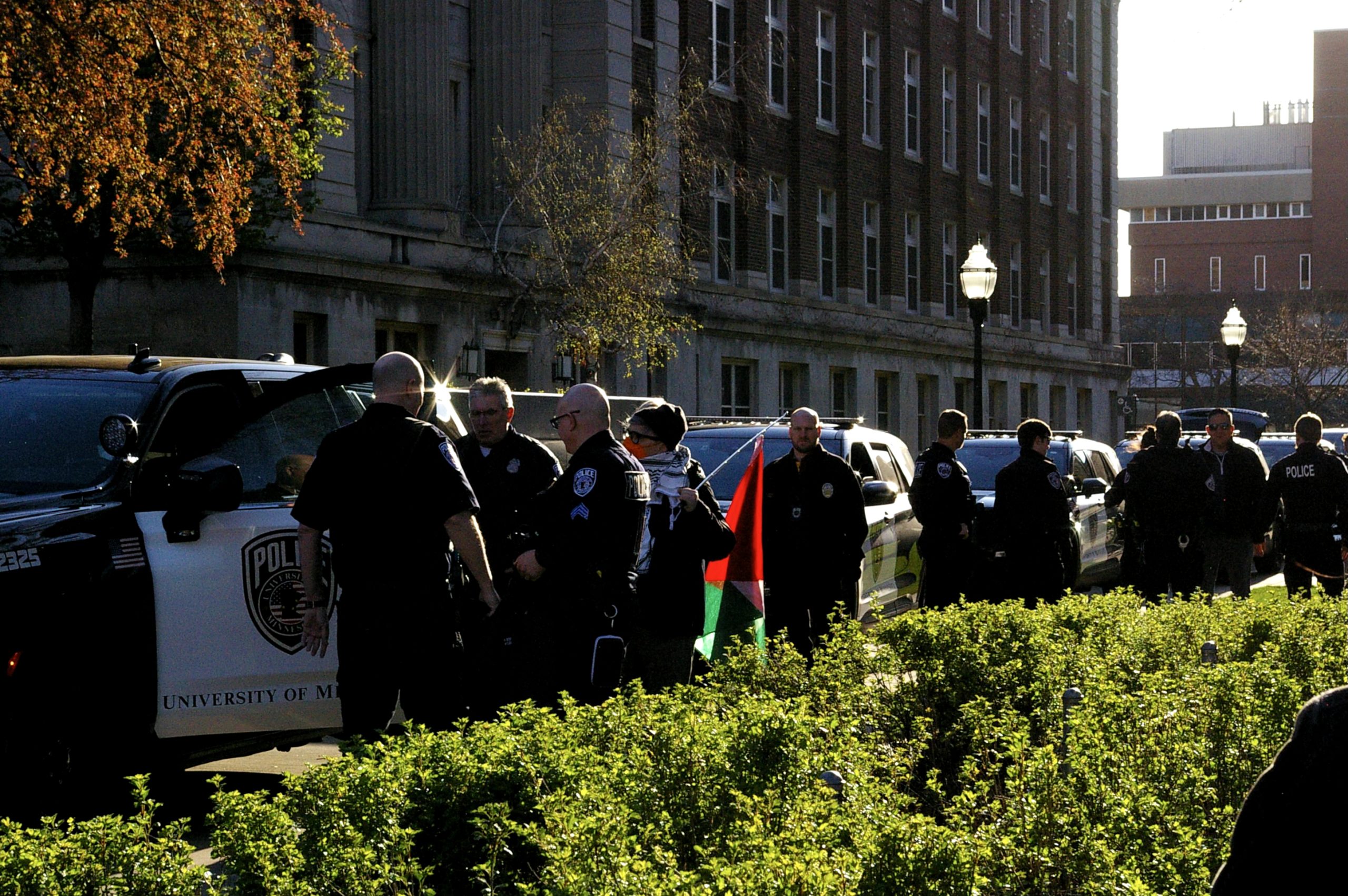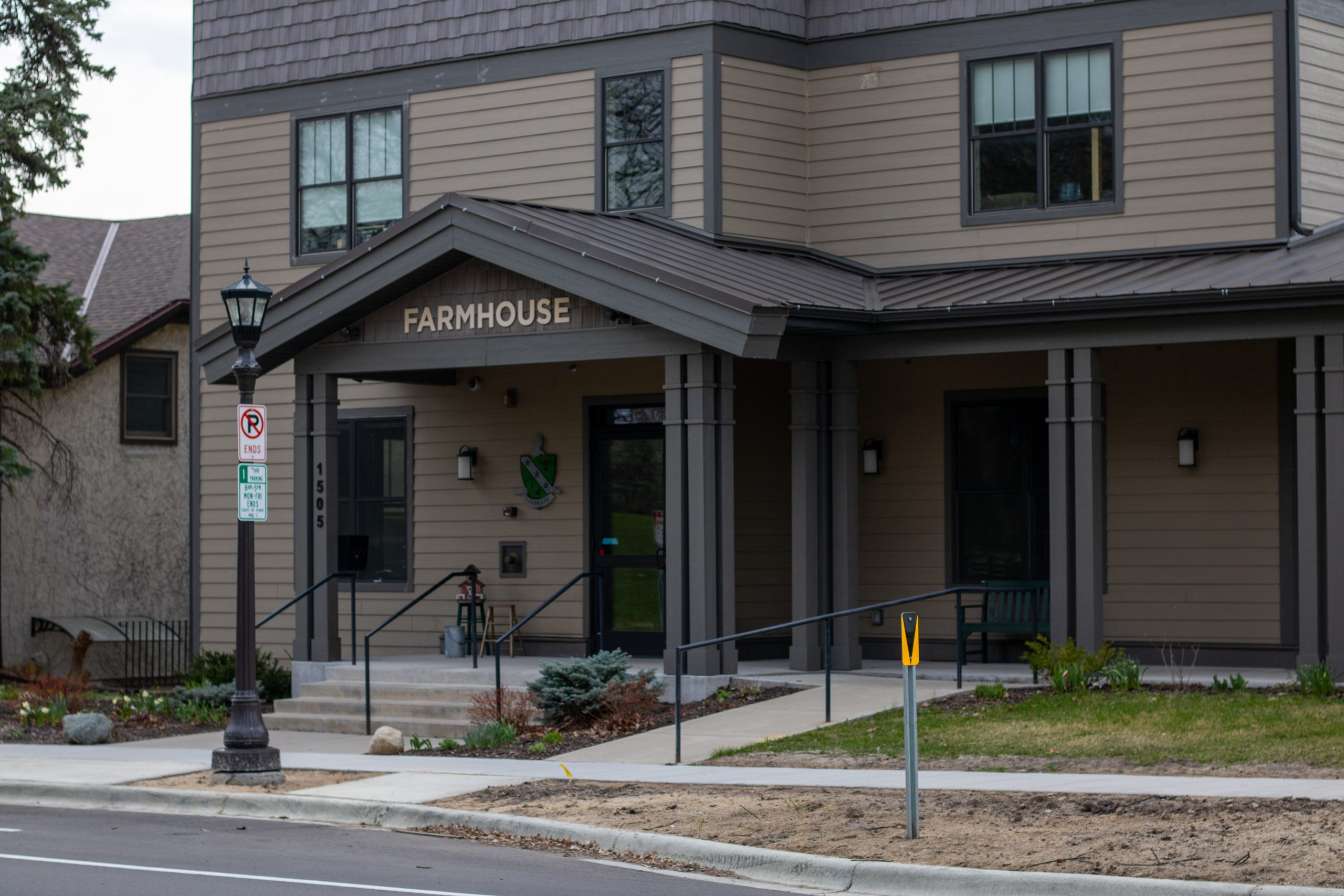In 1997, Joe Ring began to notice graffiti on the WitchâÄôs Hat Tower. Ring was already a Prospect Park resident for 20 years at that time, and had no plans of leaving. So every morning, Ring got in his truck and drove over to the tower. If he found graffiti, he would paint over it. At first Ring found graffiti every other day. Within a year of his effort, the spray-paint appeared once a week. RingâÄôs truck and his house were vandalized. Once, the taggers confronted him. Ring made clear to them that he was going to paint over the graffiti on that day, and any other day he found it. By the time the city took over the job in 1999, the defacing occurred rarely, if at all. The Prospect Park neighborhood has stood down vandals, outlasted an oil company and forced the rerouting of Interstate 94. The neighborhood has welcomed black, Hmong and Somali people. But in the last 20 years, residents have watched as student housing buildings moved into the neighborhood. Prospect Park now holds TCF Bank Stadium, and in 2014 will house a Central Corridor light rail station. Prospect Park community leaders are not resisting the University of MinnesotaâÄôs expansion, but they have applied for national designation as a historic district to help them preserve the neighborhood. Dick Poppele , a professor Emeritus in neuroscience at the University, is president of the Prospect Park East River Road Improvement Association and a 40-year resident of the neighborhood. âÄúItâÄôs always been the 800 lbs. gorilla,âÄù Poppele said of the University. âÄùEven though itâÄôs the place we know and love.âÄù Areas of influence During the 1980s, Prospect Park changed very little. Its population was stable, and the trend in real estate was for rental properties to be converted into family homes. The 18- to 24-year-old demographic actually shrunk. But in the 1990s, Prospect Park changed dramatically. More than 300 rental properties were added, most of them marketed toward University students. The population of 18- to 24-year-olds more than doubled, while the 25- to 44-year-old population decreased. Dinnaken Properties and the University Village Apartments accounted for much of the demographic shift. Since 2000, Melrose Apartments âÄî now the District on Delaware âÄî the U Flats and M Flats have joined the neighborhood. The University manages 112 of 199 University Village units. In total, there are 772 rental units marketed toward students in Prospect Park. Next spring Prospect Park will find out whether it has achieved status as a recognized historic district. The designation would add a layer of decision-making when a new investor enters the neighborhood, and give the long-term residents a greater say in what can and cannot be built. In the 1960s the University Board of Regents named Oak St. the regentsâÄô boundary, Poppele said. In the UniversityâÄôs 2009 Master Plan, the whole Prospect Park neighborhood was included in what was called the UniversityâÄôs âÄúarea of influence.âÄù PPERIA took issue with this, specifically the looming phrase âÄúadditional acquisitions that are unforeseen at this time.âÄù Mannix Clark , associate director of Housing and Residential Life at the University, is quick to point out that the University only leases about half of University Village Apartments. All of the other recent buildings aimed at student renters are privately owned and operated. Clark is sympathetic to the neighborhoodâÄôs concern, but said the market for student housing is still strong. âÄúWe still have 400 students on a waiting list in the summer that we canâÄôt house,âÄù Clark said. Stability over vanity When MinneapolisâÄô housing prices decreased during the 1980s, Prospect ParkâÄôs property values held steady. Over the next decade, as the cityâÄôs prices recovered, Prospect ParkâÄôs spiked, with the average home sale $21,000 more than in 1980. Real estate agent and Prospect Park fixture Mary Alice Kopf said the neighborhood has weathered the recent housing crisis better than the city of Minneapolis. While Minneapolis housing prices have gone down an average of 14 percent, Kopf said Prospect ParkâÄôs are down only 4 percent. She credits this to the neighborhoodâÄôs disinterest in gaudy additions to their homes, adding that the people of Prospect Park choose financial stability over vanity. âÄúYou never care about what kind of car somebody has,âÄù Kopf said. In all of Prospect Park, Kopf can think of only one house which has gone into foreclosure. As for future development, Kopf said she knows of only a single vacant lot in the area. Kopf said her house, built in 1947, is actually one of the newest homes in the neighborhood. One-fourth of Prospect ParkâÄôs homes were designed by architects, including one by renowned architect Frank Lloyd Wright. Kopf said residents constantly receive offers from agents who want to buy an older house and convert it into a rental property for students. She fears that someday Prospect Park could look like some parts of the Como and Marcy Holmes neighborhoods, where undergraduate renters are now the majority. Kopf cannot explain why more business-minded property owners have been unsuccessful in infiltrating Prospect Park, but she thinks one reason is the strong attachment that longtime owners have to the area. âÄúThere are predatory people all the time,âÄù Kopf said. âÄúSo weâÄôve just got to hope that there are still going to be people who take part [in the neighborhood].âÄù Neighborhood fabric In the early 1950s, as the city sought to place a low-income housing project, Prospect Park residents said they would comply on one condition: the city would need to provide on-site social services. Over the last 50 years, various waves of low-income renters have passed through the Glendale Townhome project. First it was low-income University students. In the 1960s, the once-predominately white neighborhood welcomed black people moving from Detroit and Chicago. Then came Hmong refugees from Laos and Vietnam. Since the mid-1990s, Glendale has been home to many Somali refugees. Ann Munt and Jane Hanger Seeley , who have both lived in Prospect Park for more than 35 years, help provide those social services for Glendale. They take pride in the way their neighborhood has responded to its immigrant population. âÄúItâÄôs a very liberal community,âÄù Seeley said. âÄúBecause of that, people welcome people from all over the world.âÄù One resident used a connection with Goodwill to get free bedding and clothing for Glendale. One woman provided fabric and another gave sewing machines to the Somali women. Local Lutheran and Catholic churches have given 80 gift certificates to Glendale families for Christmas. Last week, an e-mail went out to the neighborhood, saying that Glendale residents needed help with food and clothing. âÄúI donâÄôt know what the response to that is,âÄù Poppele said. âÄúBut I can anticipate it: all of the sudden theyâÄôre going to have lots of food and clothing sent down there, because thatâÄôs the culture of our neighborhood.âÄù Munt has been particularly impressed by the organizational skills of GlendaleâÄôs Somali women, in particular Hawa Aden . As Pratt elementary school faced cuts in the most recent school board hearing, Aden spoke in its defense. âÄú[Aden] said Pratt school really helps to define the neighborhood, and the fabric of the community,âÄù Munt said. Battles past and future In its appeal for historic designation, neighborhood residents, including Kopf, compiled a historical book called âÄúUnder the WitchâÄôs Hat.âÄù The book recounts the neighborhoodâÄôs past and states that its neighborhood association is the oldest of its kind in the city. According to the book, a letter from Prospect Park residents to then-Gov. Orville Freeman prevented construction of Interstate 94 in its original blueprint, which would have torn down Glendale and what is now Luxton Park, to make room for the highway. The book also details the neighborhoodâÄôs decades-long battle to stem the growth of Gopher Oil Company. Gopher Oil left the area in the early 1980s, and its former space now holds the East River Mews townhomes. The bookâÄôs final pages include a satirical letter, written from the year 2050. The letter imagines Glendale, and the houses closest to campus, gone. According to the letter, âÄúthe University gobbled it up and built more high-rise student housing with a commercial mall and entertainment complex.âÄù To be sure, this is a worst-case scenario for long-term residents, and one that Poppele and Kopf feel will not happen if the neighborhood is granted its historic designation. Kopf could not quite explain why the neighborhoodâÄôs longtime residents have committed to preserving Prospect Park. âÄúYou just want to,âÄù Kopf said. âÄúI lived in Chicago for years, and I canâÄôt imagine having that opportunity to participate and make a difference.âÄù










